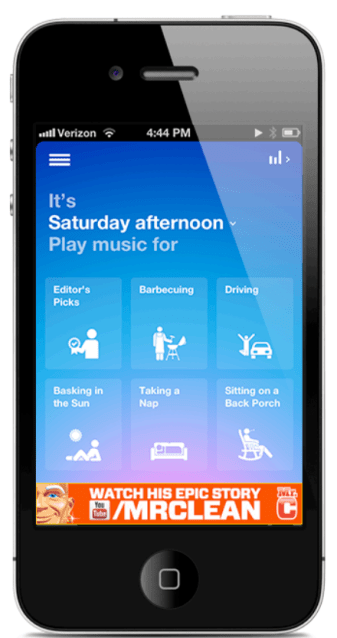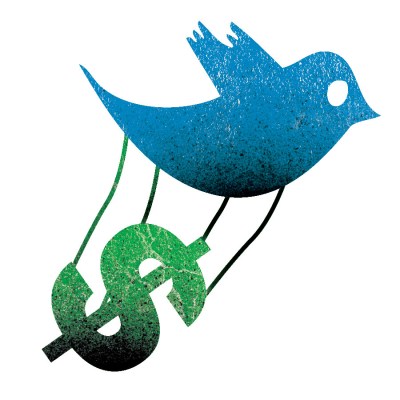Everything that happens on Twitter could become fuel for targeting off-site ads run through its recent ad network acquisition MoPub, according to the Financial Times‘ sources. In theory, users logged in to Twitter could see ads related to who they follow and words they tweet on sites with MoPub-powered ads. Twitter could then earn money on its data rather than by showing more ads on its service.
Twitter’s “Interest Graph” data, not the eyeballs it brings in, may become a cornerstone of its business. The prospect of Twitter generating revenue on a large scale without cluttering its site and apps with ads could be a big selling point as it shops its fast-approaching IPO to bankers and the public.
The Financial Times writes behind its paywall that once Twitter’s acquisition of MoPub closes, “Twitter is planning to mine data on its messaging platform to help sell advertising on other mobile apps or websites…it plans to use data about who users follow and what they tweet about to target ads beyond its own Promoted Tweets, according to people familiar with the plans.”
Though the report is a bit hazy, there are two core ways for Twitter to leverage its data through MoPub beyond its walls.
First, as I mentioned above, MoPub could use Twitter as a cross-device identity layer for off-site/off-app ad targeting. Imagine that I’ve tweeted “I want to go to Hawaii” or “What’s the best DSLR camera?”, or follow @HawaiianAir or Digital Camera World’s @DCamMag. Then while logged in to Twitter, I visit a website that runs MoPub ads. Twitter could use my keyword and follow data to target the MoPub ads on that site and show me promotions to buy cheap flights to Hawaii or news about DSLR cameras.
 In the MoPub case study example to the right, a Songza app user who is logged into Twitter and has tweeted “I love cleaning” could be accurately targeted with this ad for Mr. Clean cleaning solution.
In the MoPub case study example to the right, a Songza app user who is logged into Twitter and has tweeted “I love cleaning” could be accurately targeted with this ad for Mr. Clean cleaning solution.
An alternative or complementary way for Twitter to employ its Interest Graph, which ties people to interests, is to generate an affinity graph, which ties interests to other interests. This could allow it to improve MoPub targeting even for users who have never signed up for Twitter.
Here’s how. Twitter could see that people who tweet about flying to Hawaii also frequently tweet links to certain types of websites, say Golf.com. Twitter could then tell MoPub to show ads for flights to Hawaii on Golf.com (if it was a MoPub client). In this way, people who use Twitter provide the data to improve ad targeting to those who don’t.
For some, the use of Twitter data to market to them elsewhere might come off as a bit creepy. In reality, though, most of what people do on Twitter is public already. This method just leverages it. And compared to other sites that use the private personal information you volunteer to target ads, in some ways these Twitter-MoPub integrations are more innocuous.
They could even lead to a more organic Twitter experience for users. A year ago I wrote a piece called “Imagine A Facebook With No Ads, It’s Easy If You Try”, where I discussed how by using its vast trove of biographical and interest data, Facebook could eventually power an offsite ad network and show fewer or even zero ads on its own site.
That was shortly after Facebook announced beta trials of partnerships with third-party mobile ad networks where it would contribute data to improve targeting to Facebook-logged in users.
The company paused these trials a few months later citing a desire to focus on improving ads on its own properties. However, sources told me it was also because Facebook found the margins it was getting through these partnerships were too low. The publishing sites that host ads, the ad networks that find them advertisers to fill the space, and in some cases ad exchanges that serve the ads, all needed to be compensated, leaving too little margin left for Facebook. But last month, Facebook fired up the ad network again.
By buying MoPub, Twitter doesn’t have to split the margins on serving off-site ads, making it a much more lucrative business. The strategy could make it a ton of money, helping it to satisfy investors and boost its soon to be public share price. Twitter is getting very serious about ad partnerships considering the company today hired away iTunes Radio’s product manager Gareth Paul to work on the initiative.
It all begs the question of whether Facebook should or will buy a mobile ad network itself to rapidly scale up its plans in the space.
Twitter’s deal to buy MoPub for $350 million in cash and stock is expected to close in Q4 2013. Once it does, we’ll see how the integrations begin. Perhaps it’s a Twitter with a lot more revenue but not a lot more ads in its own stream that we should be imagining.
[Image: Gluekit]
